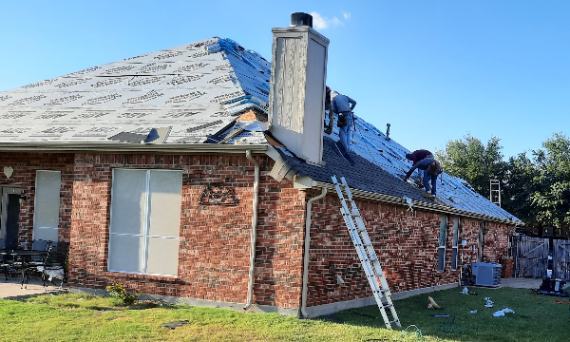Commercial and residential Dallas Roofing are two distinct categories of roofing systems that cater to different types of buildings and their specific requirements. Here’s a breakdown of the key differences between them:
- Building Type and Size:
- Commercial Roofing: Commercial roofs are designed for larger structures such as office buildings, warehouses, retail outlets, factories, and other non-residential properties. These buildings tend to have larger roof areas and more intricate designs.
- Residential Roofing: Residential roofs are meant for houses, apartments, townhouses, and other places where people live. These roofs are typically smaller in scale compared to commercial roofs.
- Roofing Materials:
- Commercial Roofing: Common commercial roofing materials include single-ply membranes (TPO, PVC, EPDM), built-up roofing (BUR), metal roofing (standing seam or corrugated), and spray foam roofing. These materials are chosen for their durability, longevity, and ability to cover large surface areas.
- Residential Roofing: Residential roofs commonly use materials such as asphalt shingles, wood shakes, metal roofing (shingles or panels), slate, and tile. These materials are often selected for their aesthetic appeal, versatility, and suitability for residential structures.
- Roof Design and Slope:
- Commercial Roofing: Commercial roofs can feature flat or low-slope designs due to the need for accommodating HVAC systems, vents, and other equipment. The focus is on functionality and efficient water drainage.
- Residential Roofing: Residential roofs typically have steeper slopes and a greater variety of design options to enhance curb appeal. The design may include features like gables, dormers, and chimneys.
- Structural Considerations:
- Commercial Roofing: Commercial roofs need to support heavy equipment, HVAC systems, and potential foot traffic for maintenance. They are designed to withstand higher loads and are often flat or low-sloped to provide space for such equipment.
- Residential Roofing: Residential roofs are designed primarily to provide protection from the elements and require less load-bearing capacity since they usually don’t host heavy equipment.
- Complexity of Installation:
- Commercial Roofing: Installing commercial roofing can be more complex and requires specialized skills due to the larger size, potential for more intricate design elements, and specific material requirements.
- Residential Roofing: Residential roofing installation is generally less complex and is often carried out by local roofing contractors familiar with common residential roofing materials.
- Regulations and Codes:
- Commercial Roofing: Commercial roofing must adhere to specific building codes and regulations related to fire safety, occupancy, and load-bearing capacity for the type of commercial building.
- Residential Roofing: Residential roofing is also subject to building codes but is tailored to the needs of residential structures in terms of safety and occupant comfort.
In summary, the main differences between commercial and residential roofing lie in the building types they serve, the materials and designs they employ, as well as their structural and functional requirements. Each type of roofing serves its respective purpose while addressing the unique challenges of its intended building category.
